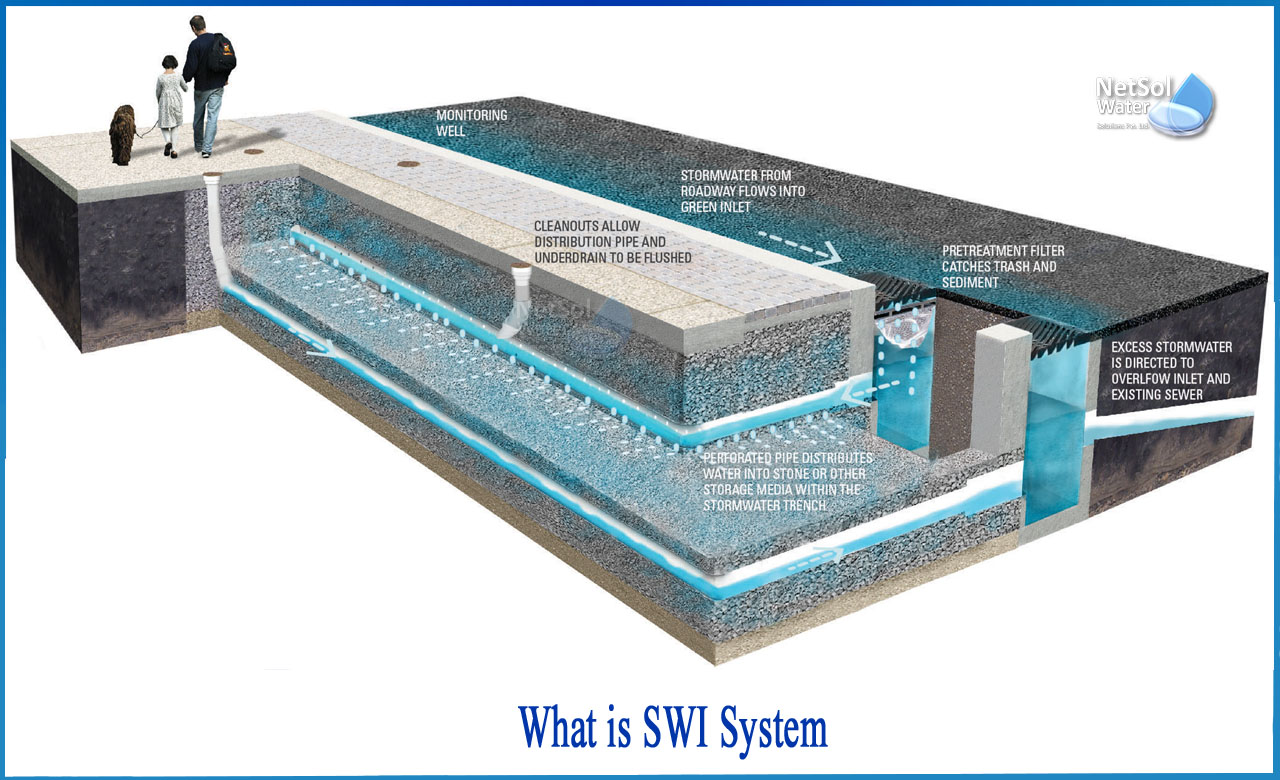What is Subsurface Wastewater Infiltration?
Subsurface wastewater infiltration (SWI) is an upgraded method of soil capillary infiltration trench. Because the medium has been specifically designed, contaminants are filtered, absorbed, and degraded, and the effluent may be collected and recycled.
SWI may be flexibly paired with a range of pre-treatment procedures based on the effluent reuse scenario and water quality needs, emphasizing their high effectiveness in pollutants removal, low operating cost, and easy management.
Because the medium is projected to have a high biological respiration capacity, the SWI service life is estimated to be 50 to 70 years.Clogging can directly affect the percolation process's hydraulic load (treatment efficiency). Furthermore, blockage causes an uneven distribution of wastewater, which leads to the exclusion of the filter zone, surface ponding, and overflow. The composition of organic debris and loading rates influence blockage.
Clogging genesis: Retention of physical form
The physical clogging process and its mechanism primarily consists of
1. Suspended solids (SS) clogging;
2. Blockage of the dissolved organic fraction;
3. Matrix aggregate congestion due to brokenness.
The sooner the clogging issue occurs, the higher the SS load applied.
Physical blockage induced by suspended materials is classified according to particle size.Surface clogging occurs when SS with bigger particle sizes cannot penetrate the pores and is separated from the surface. Internal blockage occurs when smaller particle size SS moves and becomes caught within the narrower pores.
Clogging via biological processes
Cells, extracellular polymers, and sedimentation driven by microbes all contribute to the biofilm clogging process. In comparison to SS, dissolved and hydrolysed organics contribute to blockage indirectly. As previously stated, bio-blockage adds to a longer-term impact, whereas SS results in a rapid clogging of the microscopic pores. Furthermore, biofilm growth may result in a longer SS retention duration in the pores.
If the influent has a significant nutrient load, bio-clogging will be accelerated. The influence of temperature on bio-clogging is still debatable. Most scientists anticipate that when temperatures rise, enzyme activity and organic matter decomposition will increase, resulting in more serious biological blockage.
Precipitation via chemical means
Slag has a greater specific surface area and more active sites, which can boost phosphorus removal efficiency dramatically. Slagtypically comprises oxides such as MgO, CaO, and FeO. Long-term interaction with sewage will result in precipitations such as CaCO3 and MgCO3, which will clog the SWI matrix. The precipitates build-up in the matrix pores and significantly contribute to pore occlusion.
If you want to know more about subsurface wastewater infiltration systems, you can have an expert solution upon contacting Netsol Water, a leading manufacturer of Industrial and Commercial Water Treatment Plants and Wastewater Treatment Plants, among other services. Our treatment systems are very effective at removing all types of chemical, physical, and biological pollutants.
Call us on +91 9650608473 or contact via email at enquiry@netsolwater.comfor more information.



